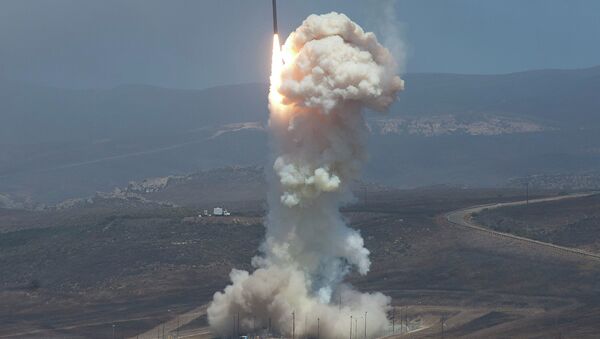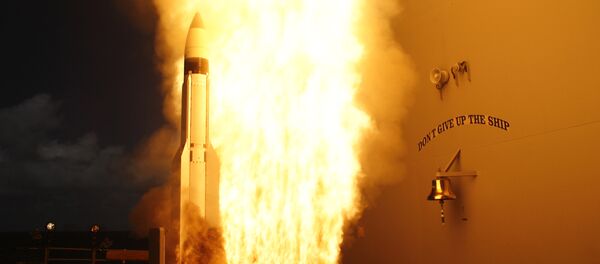WASHINGTON (Sputnik) — The United States could bolster missile defense systems in Europe and deploy offensive capabilities in response to Russia’s purported violations of the Intermediate-Range Nuclear Forces Treaty (INF), experts told Sputnik.
“Options include increased SM-3 [ship-based] and Vertical Launch System-based missile defense deployments in Eastern Europe and elsewhere,” International Security Fellow at the Center for Strategic and International Studies (CSIS), Thomas Karako, told Sputnik on Tuesday. “They could also include a wide variety of offensive strike forces.”
Karako recommended increasing the range of rocket artillery, converting air-and sea launched missiles to land and restoring nuclear sea-launched cruise missiles, as potential offensive options.
David Kearn, Professor of Government at St. John’s University, told Sputnik that the United States had sea-based weapons systems that could be deployed relatively quickly to defend US assets in Europe and potentially deter Russia.
The missile cruisers, according to Kearn, carry a couple hundred vertical-launched tomahawk missiles. Although they are scheduled to be phased out within the next few years, Kearn added, the subs represent one of the best readily-available options the United States has in its arsenal.
Wilson Center scholar Michael Kofman told Sputnik that the most likely option for the United States would be reinforcing missile defense systems. Even if there is not any direct linkage with Russia’s specific violations, the announcement of a more robust missile defense posture in Europe would concern Moscow.
“I think the US could bolster missile defense, or possibly shift the basing for its very limited tactical nuclear arsenal that remains in Europe,” Kofman said.
On Friday, a US House Armed Services committee staffer told Sputnik that Congress would actively consider Pentagon recommendations for a possible military response to Russia’s alleged violations of the INF.
Beginning in July 2014, the United States announced Russia had violated the treaty by testing a prohibited ground-launched cruise missile, according to the US State Department. Russia has denied the US claim, pointing, in turn, to US INF violations.
The United States and the Soviet Union signed the INF Treaty in 1987 banning nuclear and conventional ground-based cruise and ballistic missiles with a range of 310 miles (498km) to 3417 miles (5499km).


